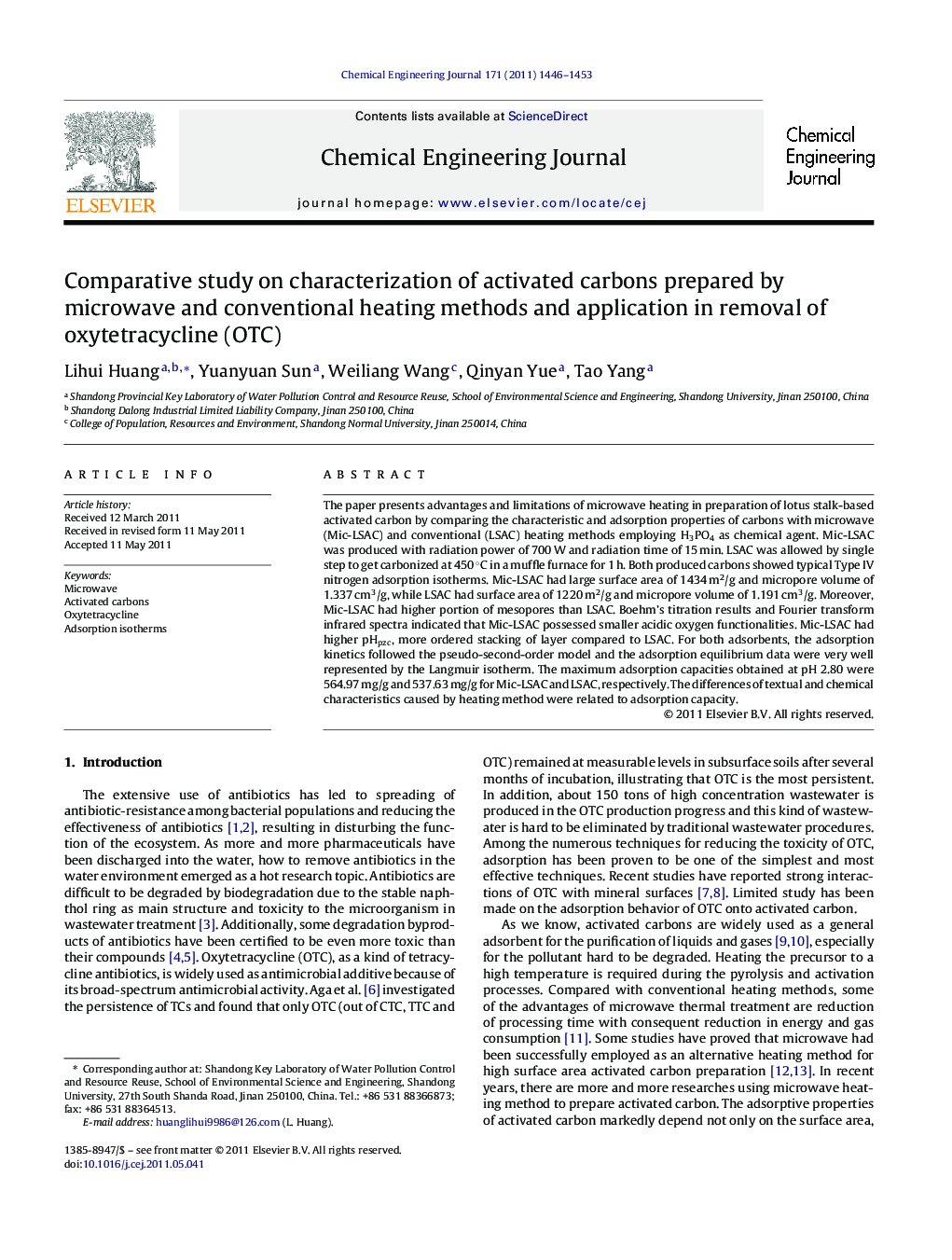| Article ID | Journal | Published Year | Pages | File Type |
|---|---|---|---|---|
| 150944 | Chemical Engineering Journal | 2011 | 8 Pages |
The paper presents advantages and limitations of microwave heating in preparation of lotus stalk-based activated carbon by comparing the characteristic and adsorption properties of carbons with microwave (Mic-LSAC) and conventional (LSAC) heating methods employing H3PO4 as chemical agent. Mic-LSAC was produced with radiation power of 700 W and radiation time of 15 min. LSAC was allowed by single step to get carbonized at 450 °C in a muffle furnace for 1 h. Both produced carbons showed typical Type IV nitrogen adsorption isotherms. Mic-LSAC had large surface area of 1434 m2/g and micropore volume of 1.337 cm3/g, while LSAC had surface area of 1220 m2/g and micropore volume of 1.191 cm3/g. Moreover, Mic-LSAC had higher portion of mesopores than LSAC. Boehm's titration results and Fourier transform infrared spectra indicated that Mic-LSAC possessed smaller acidic oxygen functionalities. Mic-LSAC had higher pHpzc, more ordered stacking of layer compared to LSAC. For both adsorbents, the adsorption kinetics followed the pseudo-second-order model and the adsorption equilibrium data were very well represented by the Langmuir isotherm. The maximum adsorption capacities obtained at pH 2.80 were 564.97 mg/g and 537.63 mg/g for Mic-LSAC and LSAC, respectively. The differences of textual and chemical characteristics caused by heating method were related to adsorption capacity.
► Microwave heating is used to prepare lotus stalk-based activated carbon. ► Conventional heating is also used to prepare lotus stalk-based activated carbon. ► The different properties between these two kinds of carbons are compared. ► We correlate the properties of carbons with the ability to adsorb oxytetracycline.
